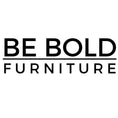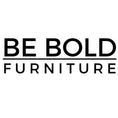Modern vs. Eclectic Furniture

Furniture plays a significant role in shaping the aesthetic appeal and functionality of our living spaces. Over the years, different styles and design philosophies have emerged, offering a wide range of choices for interior decoration. Two popular styles that have gained prominence in recent times are modern and eclectic furniture. While both embrace contemporary elements, they possess distinct characteristics that set them apart. In this blog, we'll delve into the unique features of modern and eclectic furniture, helping you understand their differences and find the perfect fit for your home.
The Essence of Modern Furniture:
Modern furniture embodies the essence of sleek simplicity and functionality. It emerged during the early to mid-20th century, influenced by the Modernist movement. Key features of modern furniture include clean lines, minimalist forms, and a focus on practicality. Materials like metal, glass, and polished wood are commonly used to create a streamlined look.
1. Minimalism and Simplicity:
Modern furniture champions simplicity, emphasizing clean and uncluttered designs. The focus is on creating a sense of openness and spaciousness, with minimal ornamentation or decorative elements. The emphasis lies on function over elaborate embellishments.
2. Geometric Shapes and Clean Lines:
Straight, geometric lines are a hallmark of modern furniture. Clean lines bring a sense of precision and order, often showcased through angular designs. The use of curves is minimal, with a preference for simple, straight edges and sharp angles.
3. Neutral Color Palette:
Modern furniture typically utilizes a neutral color palette, with shades like white, black, gray, and beige dominating the design scheme. Bold accents may be incorporated through vibrant, monochromatic colors or occasional pops of vibrant hues to create visual interest.
Embracing Eclectic Furniture:
Eclectic furniture, on the other hand, celebrates diversity and creativity by combining elements from different eras, styles, and cultures. This style allows for an individualistic approach, enabling homeowners to curate a unique and personalized space.
1. Mixing Styles and Eras:
Eclectic furniture embraces the freedom to mix and match styles from various periods. It creates an eclectic charm by combining traditional, vintage, and contemporary elements within the same space. It's not bound by any specific rules, allowing for experimentation and self-expression.
2. Vibrant Colors and Patterns:
Eclectic furniture revels in a world of colors and patterns. Bold, contrasting hues and intricate patterns play a crucial role in adding vibrancy and visual interest. Whether through upholstery, accessories, or statement pieces, eclectic furniture invites you to embrace a lively, energetic atmosphere.
3. Showcasing Individuality:
Eclectic interiors reflect the personality and interests of the homeowner. This style encourages the display of cherished collections, unique art pieces, and personal mementos, creating a space that tells a story. It's a celebration of individuality and the joy of surrounding oneself with objects that hold personal significance.
Choosing the Right Style for You:
When deciding between modern and eclectic furniture, consider your personal style, the existing architecture of your home, and the atmosphere you wish to create.
If you appreciate clean lines, minimalism, and a sense of order, modern furniture might be your ideal choice. It's suitable for those seeking a sleek, uncluttered aesthetic.
However, if you find joy in mixing styles, patterns, and colors, and want to create a space that reflects your unique personality, eclectic furniture offers the freedom to curate a truly one-of-a-kind interior.
Modern and eclectic furniture represent two distinct design philosophies that cater to different tastes and preferences. While modern furniture emphasizes simplicity, functionality, and clean lines, eclectic furniture embraces diversity, creativity, and the freedom to mix and match styles. Understanding the differences between these




